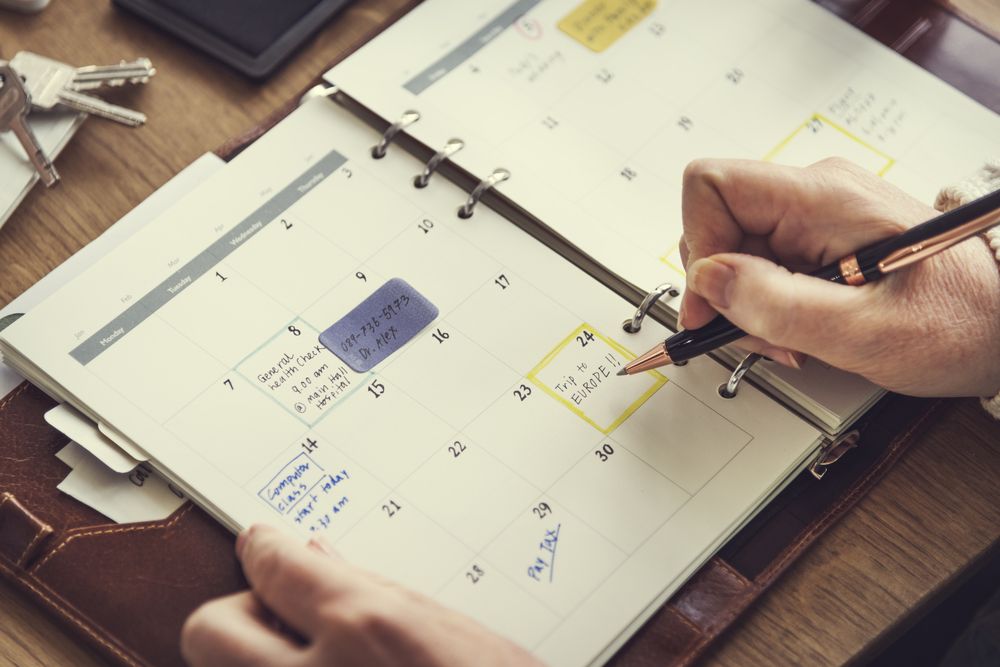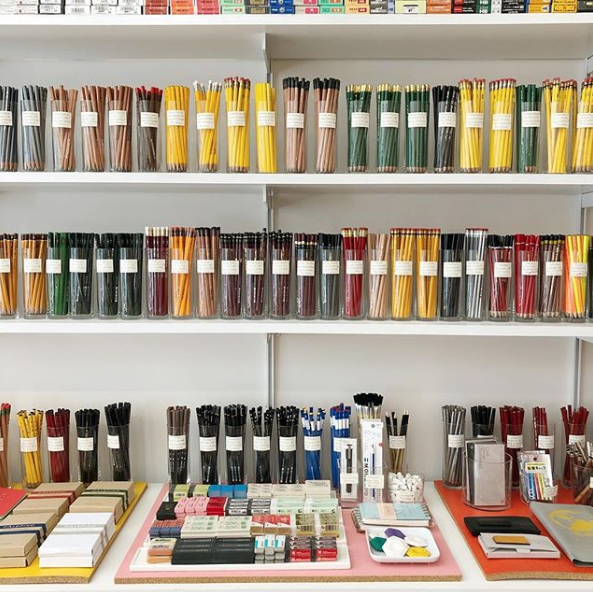Since day 1 of Showcase, our development team (at that point, just 2 people) have insisted upon Moleskine notebooks.
No Moleskine, no development.
As a note-taker with entirely different preferences, I used to think this was kind of high-maintenance. But as a software startup there’s not a whole lot of things that we “splurge” on so I figured if $60 a quarter is what it takes to keep the team happy and Showcase functioning, then that’s a cost of business I could learn to live with.
And then recently, at some of the trade shows and industry events I’ve been attending, I have noticed more people than ever walking around with notebooks, taking notes on paper.
The more I dug into this, the more I’ve seen that it’s a trend. More and more of us appear to be adding paper planners and notebooks to our organizational arsenal — or switching to paper exclusively and ditching the digital apps.
Notebook sales rose 18% in 2018 alone, according to one study. What?!
So what’s the difference between planning on paper and using digital tools to organize your life?
I decided to get into the weeds on this trend and see what I could learn. I thought you might enjoy some of the things I discovered.

Pros and Cons of Planning on Paper
The are obvious nostalgic and creative elements to putting pen to paper — but there are huge cognitive and organizational benefits, too.
It’s long been known that writing things down helps you remember them better, and research has proven this. One of the most famous studies comes from Pam Mueller and Daniel Oppenheimer, who found that students who took notes on laptops had a harder time answering conceptual questions than students who wrote out their notes longhand.
Got writer’s block? Need to generate some new ideas? Interestingly, scientists have also found a connection between writing and idea generation. So planning on paper may have the added benefit of inspiring you and perhaps making you more innovative.
There’s sentimental value to keeping a “diary” of your life, too. Old planner pages are snapshots of your priorities at any given time. I loved this quote from a Fast Company article by Michael Grothaus:
“My grandfather used to carry a small pocket diary, and when he died, we found decades of them in his drawer,” says Fast Company copy editor and writer Michelle Lewis.
Depending on the planner you buy, using paper can also help you keep everything in one place, too. There’s something to be said for having your schedule and your meeting notes all in one pretty, analog package.
As far as I can tell, there are only two major downsides to planning your days on paper.
First, it’s costly over the long run. One quarter’s worth of Moleskine’s will set you back the same as the annual or lifetime fee for many popular task management apps.
Second, paper planners have no real editing capability. Especially if you write in pen. Of course, the easy solution to the editing problem is to write in pencil.

As an aside, here’s a link to my second favorite website on the whole entire internet: CW Pencils.
Pros and Cons of Using Digital Planning Tools
Ok, so back in the 21st century, what’s the one thing we always have on us at all times?
Yes.
Our smartphones.
Digital planning apps have a huge advantage over paper in that not only are they more portably convenient, but you’ll rarely, if ever, forget your phone. Your digital tools will always be with you.
And these days WiFi availability doesn’t hinder how and when we use our digital apps. Most people have 3G or 4G wireless internet service on their phones, and hotspots are easy to access for other devices. Many apps can even be used offline, too, so you don’t have to have an internet connection to do your planning and note-taking. These apps sync up your data as soon as you get a signal.
Thanks to cloud computing, as long as you have an internet connection on your device, your digital planning apps will stay up-to-date and synced across devices.
This also makes editing a breeze. Change a meeting time on your MacBook and it’ll automatically change on your iPhone (or PC / Android for any non-Apple-using weirdos).
Digital planning apps are also (usually) significantly cheaper to buy than paper planners and you don’t have to replace them after each planning cycle.
Another thing I really like about a lot of digital planning apps: collaboration and reporting. Not every app has those features, of course — but when they do, it’s great to have a record of what I’m doing and when. For example, in Asana you can see the history of a task at a glance — you’ll see when the task was created, who updated it and when, and when it was completed. That’s handy information to have when your memory fails you (or your coffee hasn’t kicked in yet).
Like with paper planners, though, I see two downsides:
First, if you’re using more than one app, it’s easy to forget where you put an entry. And if the apps don’t “talk” to one another, you could end up on bit of a wild goose chase looking for critical data. Did you put those meeting notes in Evernote? Or did you jot them down in your phone’s native notepad app? You added that meeting to your Google Calendar — why isn’t it showing up in your iPhone’s Calendar app?
Second — and this may be a bit touchy-feely — digital planning tools don’t have that “human touch” of writing on paper. There’s a cognitive disconnect between you and what you’re writing down. Plus, there’s the ever-present distraction of communication and entertainment apps. One minute you’re typing meeting notes, and the next you’re scrolling Instagram looking at pencils.

So which planner type is best for YOU?
After researching this extensively (read: talking to all the other planning nerds I know), here is my take on the paper vs. digital planning debate:
For memory retention and creativity, use paper.
For productivity and analytics, use digital tools.
How Our Tech-centric Team Plans a 12-Week Year
In a nutshell, your personal goals and preferences are going to determine the best planning method for you. More than likely, you’ll use both paper and digital planning tools at any given time. And that’s okay, I’m not here to judge.
Moleskine demands aside, the Showcase team is as tech-centric as they come but even our group of digital doyens uses a mixed approach when it comes to planning.
We follow the 12-week year planning process, so we have a big planning meeting once a quarter to plot out our next sprint.
First we talk through our big goals for the three critical stages of our business: attract, convert, and nurture (aka retention). Then we use a whiteboard to jot down all our ideas and map out our individual projects related to those big goals. This way we make sure there’s an even distribution of activities across the team’s skill areas.
Then each team member takes their tasks and puts them into their digital tool of choice to plan out their own time. We break tasks down into hours, allocate those hours across the 12-week cycle, and account for general meeting time, too. The end result is a customized action plan for each team member, created in the planning tool that works best for them.
Our team aren’t the only ones who benefit from taking the time to plan well, however. We often help our Showcase customers plan out their content maps and showcase launch schedule, too. We’ve become experts in getting our clients’ showcases off the ground — beautifully and practically — in record time.
If you’re curious about that process, check out the Showcase Content Planning Guide. This free guide simplifies content planning and gives you an easy-to-follow blueprint to map out your own content.